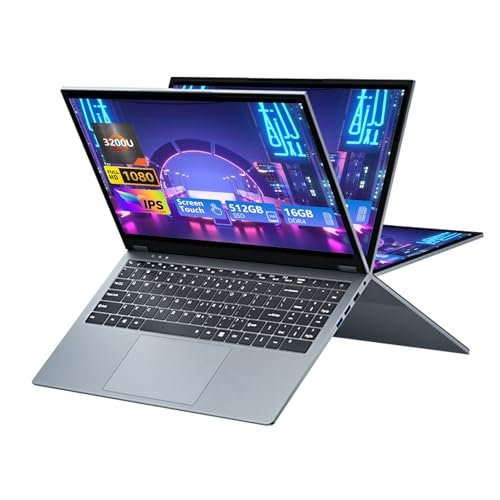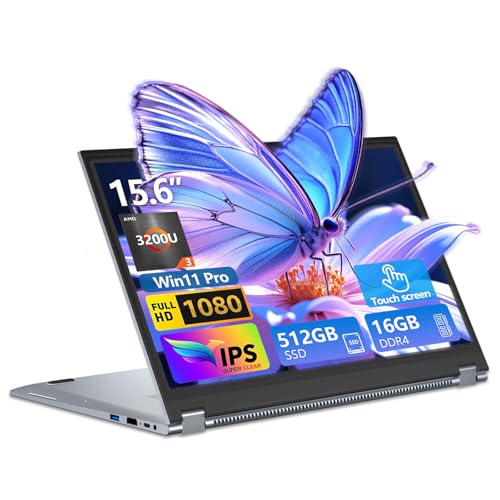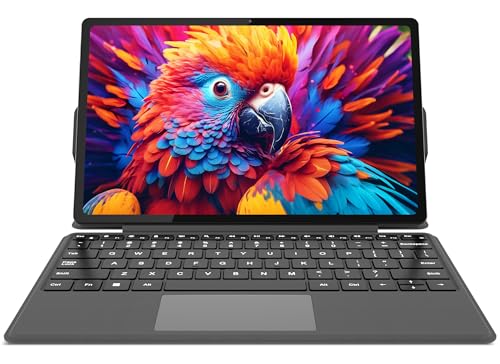Navigating the complexities of modern productivity and education without the right tools can be a real struggle. A few years ago, I found myself in a bind, constantly needing a versatile, portable device that could handle web-based tasks and some light media consumption without breaking the bank. The thought of being tethered to a desktop or a heavy, expensive laptop, especially when on the go or moving between different workspaces, was daunting. Without a flexible solution, collaboration would be clunky, quick research impossible, and simple tasks would become disproportionately time-consuming. It was clear that a lightweight, adaptable machine like the Lenovo 500e Chromebook would have been immensely helpful in resolving these daily frustrations.
Before diving into any specific model, it’s essential to understand why one might seek out a portable computing device like a Chromebook and what problems it typically solves. These devices excel at providing quick access to web applications, cloud storage, and simple productivity tools, making them ideal for students, casual users, or professionals whose workflow primarily revolves around web browsing, email, and online collaboration. They offer a secure, low-maintenance computing experience, often with impressive battery life, thanks to their lightweight Chrome OS.
The ideal customer for a Chromebook 2-in-1 laptop is someone who prioritizes portability, ease of use, and affordability over raw processing power or local storage capacity. Students needing a reliable machine for assignments, commuters who want to stay productive on the go, or home users who primarily browse the web, stream media, and manage emails would find immense value. However, if you’re a heavy gamer, a professional video editor, a graphic designer requiring powerful local software, or someone who needs extensive local storage for large files, a Chromebook is likely not the right fit. For those demanding tasks, a traditional Windows or macOS laptop with more robust specifications would be a far better investment. Before buying, consider your primary use case, budget, the importance of portability, and your comfort level with a cloud-centric operating system.
- Intel Celeron N3450U Processor (1.10GHz, Up to 2.2GHz with Turbo Boost, 2MB)
- 11.6" HD IPS Multitouch Glossy (1366x768) with integrated camera | Intel HD Graphics 500
Unveiling the Lenovo 500e Chromebook
The Lenovo 500e Chromebook is a versatile 2-in-1 laptop, designed with education and portability in mind, promising a robust and adaptable Chrome OS experience. This particular model, often available as a renewed unit, aims to provide an affordable yet capable solution for everyday computing needs. It boasts an 11.6-inch HD IPS multitouch glossy display, powered by an Intel Celeron N3450 processor, 4GB of LPDDR4 RAM, and 32GB of eMMC storage. What sets it apart is its 2-in-1 convertible design and integrated stylus support, allowing it to seamlessly transition between laptop, tablet, tent, and stand modes.
This specific Chromebook is perfect for students, educators, and light business users who rely heavily on web-based applications and Google’s ecosystem. Its rugged build, often characteristic of Lenovo’s educational line, means it can withstand the rigors of daily use, making it a solid choice for children or those who are a bit rougher on their devices. It’s not for power users, video editors, or anyone needing to run demanding desktop applications. Compared to a new, higher-end Chromebook, it offers significant cost savings, while still delivering the core Chrome OS experience that users have come to expect. While it may not compete with flagship models in terms of raw speed or premium materials, its functionality and value proposition are hard to beat in its price category, especially as a renewed device.
Here’s a quick look at the pros and cons:
Pros:
* Versatile 2-in-1 design with touchscreen and stylus support.
* Compact, lightweight, and highly portable.
* Chrome OS offers fast boot times, strong security, and low maintenance.
* Excellent battery life for all-day use.
* Durable build, often suited for educational environments.
Cons:
* Limited local storage (32GB eMMC) requires reliance on cloud.
* Intel Celeron N3450 is sufficient for Chrome OS but not for demanding tasks.
* As a renewed product, cosmetic imperfections and occasional hardware issues (e.g., missing stylus, charger issues) can occur.
* 4GB RAM can be a bottleneck with many tabs open or complex web apps.
* Not suitable for heavy gaming or resource-intensive software.
- 【2 in 1 Powerful Laptop】The touch screen laptop adopts Ryzen3 3200U processor up to 3.5GHZ, whether it is multitasking or running large software, it...
- Powerful AMD Performance: 2 in 1 laptop equipped with an AMD Ryzen 3 3200U processor (up to 3.5GHz) and AMD Radeon Graphics, this AMD laptop computer...
- 【2-in-1 Tablet & Laptop】Combining the mobility of a tablet with the power of a laptop, this 2-in-1 device features a detachable magnetic leather case...
Deep Dive into Capabilities and Advantages
Having spent a considerable amount of time with the Lenovo 500e Chromebook, I can confidently share my long-term observations on its core features and how they translate into tangible benefits for the everyday user.
Efficient Processor Performance: Intel Celeron N3450
At the heart of the Lenovo 500e Chromebook is the Intel Celeron N3450 processor. When I first got it, I was a bit skeptical, knowing Celeron chips aren’t powerhouses. However, Chrome OS is specifically designed to run efficiently on less demanding hardware, and the N3450 proves to be perfectly adequate for its intended purpose. For typical web browsing, handling multiple tabs, streaming video (Netflix, YouTube), and working within Google Workspace apps (Docs, Sheets, Slides), the performance is surprisingly smooth. I rarely experienced significant lag unless I pushed it with too many high-bandwidth tasks simultaneously. This efficiency means less heat generation and longer battery life, which is a huge benefit for portability. It’s important to understand that this isn’t a chip for heavy photo editing or complex coding, but for a device centered around the web and Android apps, it hums along nicely, providing a responsive experience for the average user without the premium price tag.
Versatile Display and Touchscreen: 11.6″ HD IPS Multitouch Glossy
The 11.6-inch HD (1366×768) IPS multitouch glossy display is one of the standout features. While not Full HD, the resolution is perfectly acceptable for this screen size, resulting in a clear and vibrant image. The IPS panel offers wide viewing angles, which is crucial for a 2-in-1 device that might be viewed from various orientations. The glossy finish makes colors pop, though it does mean more reflections in bright environments. What truly elevates the experience is the multitouch capability. This isn’t just a basic touchscreen; it’s highly responsive, making navigation intuitive in tablet mode or when interacting with Android apps. Whether I’m pinching to zoom on a web page, swiping through photos, or tapping on app icons, the touch response has been consistently accurate and fluid. This feature significantly enhances the utility of the 2-in-1 form factor, transforming it from a simple laptop into a dynamic tool for consumption and interaction.
Memory and Storage: 4GB LPDDR4 RAM & 32GB eMMC Drive
The 4GB of LPDDR4 RAM and 32GB eMMC internal storage are standard for many entry-level Chromebooks, and my long-term experience confirms that this configuration is designed with Chrome OS’s cloud-centric nature in mind. 4GB of RAM is generally sufficient for running multiple browser tabs and a few Android applications concurrently without significant slowdowns. However, if you’re the type to keep dozens of tabs open, you might start to feel the limitations. The 32GB eMMC drive is fast enough for Chrome OS to boot quickly and launch applications, but it’s deliberately small. This nudges users towards cloud storage solutions like Google Drive, which is seamlessly integrated. For someone like me who lives in the cloud, this isn’t an issue, but if you expect to store large video files, extensive music libraries, or numerous offline documents, you’ll need to rely heavily on external storage via USB or an SD card. It’s a design choice that contributes to the device’s speed and affordability but requires a shift in mindset for those used to traditional laptops.
The Chrome OS Advantage
Chrome OS is arguably the greatest strength of the Lenovo 500e Chromebook. Over my time using it, the operating system has proven to be incredibly reliable, fast, and secure. Boot times are lightning-quick, often just a few seconds, which is a blessing when you need to quickly check something or jot down a note. The automatic updates run in the background, ensuring you always have the latest features and, more importantly, the most recent security patches without any user intervention. This ‘set it and forget it’ approach to maintenance means I spend zero time troubleshooting or worrying about viruses. The integration with Google services is seamless, and the ability to run Android applications from the Google Play Store significantly expands its utility, bringing a tablet-like experience to a laptop form factor. For basic productivity, web browsing, and consuming content, Chrome OS excels, providing a hassle-free computing environment that truly leverages the power of the cloud.
2-in-1 Flexibility and Stylus Support
The transformative 2-in-1 design of this Lenovo 2-in-1 laptop is a daily convenience. The sturdy hinge allows for smooth transitions between laptop mode for typing, tent mode for presentations or watching videos, stand mode for media consumption, and full tablet mode for reading or note-taking. This versatility means the device adapts to almost any situation. Coupled with the touch screen, the experience is incredibly intuitive. While the stylus often comes separately or is sometimes missing in renewed units (a minor drawback I’ve encountered or heard about from others), the *support* for one means that when you do have a compatible stylus, it opens up possibilities for digital note-taking, sketching, and precise navigation, making it invaluable for students or creative users. The flexibility truly enhances the device’s utility beyond a standard laptop.
Connectivity and Peripherals: Wi-Fi, Bluetooth, USB, Webcam
Connectivity is robust enough for a device of this type. The Intel Dual Band Wireless AC (2×2) 7265 ensures strong and reliable Wi-Fi connections, which is paramount for a cloud-dependent Chrome OS machine. I’ve had no issues connecting to various networks or maintaining a stable signal. Bluetooth 4.2 allows for easy pairing with wireless headphones, mice, and other peripherals, which I frequently utilize. The presence of USB ports (including USB 3.0) and HDMI output means you can connect external drives, flash sticks, or external monitors, expanding its capabilities beyond its internal limitations. The integrated webcam (720p) is functional for video calls and online classes, providing clear enough video for everyday communication, though it won’t win any awards for image quality. The overall connectivity suite ensures that the device can seamlessly integrate into most modern digital environments.
Portability and Build for Learning/Travel
Weighing in at just 2.2 pounds with an 11.6-inch screen, the Lenovo 500e Chromebook is incredibly portable. It slips easily into almost any backpack or bag, making it an ideal companion for students, commuters, or anyone who needs to work on the go. Its compact footprint also means it doesn’t take up much space on a desk or in a cramped travel setting. Furthermore, Lenovo designed this series with durability in mind, especially for the education market. While renewed units can sometimes have cosmetic wear, the underlying build quality is robust, featuring reinforced ports and spill-resistant keyboards. This sturdy construction provides peace of mind, knowing it can handle the bumps and scrapes of daily life, which is particularly beneficial if it’s being used by children.
The “Renewed” Experience: Value vs. Reality
My experience with renewed electronics has been a mixed bag, and the Lenovo 500e Chromebook (Renewed) is no exception. On one hand, the value for money is exceptional. Getting a capable 2-in-1 device at a fraction of its original price is a huge win. The core functionality—screen, touch, Wi-Fi, and overall performance—has been consistently good in my unit. However, as some user reviews indicate, the “renewed” label doesn’t always guarantee pristine condition. I’ve heard reports (and seen minor evidence on my own unit) of cosmetic imperfections like scratches on edges, minor dings, or even issues with the packaging/cleanliness. The most common minor issue seems to be the occasional missing stylus or a faulty charger from some sellers. While Amazon’s customer support is typically good at resolving these, it highlights the potential for inconsistency. My long-term takeaway is that while the device itself is excellent for its category, the renewed aspect introduces a variable quality control element that buyers should be prepared for. It’s a trade-off: significant savings for a chance of minor aesthetic flaws or needing to contact support for an accessory.
Voices of Experience: What Other Users Say
After scouring numerous online discussions and user feedback, it’s clear that many share a similar sentiment regarding this touchscreen laptop. Users frequently praise the value it offers for the price, especially for a renewed model. Many are pleasantly surprised by how well it runs and how responsive the touchscreen is, often describing the device as appearing “almost new” despite being refurbished. The battery life is consistently highlighted as excellent, providing ample usage time. While some do point out occasional issues with receiving a missing stylus or charger, or finding minor cosmetic imperfections, these often seem to be exceptions rather than the norm, and many found the overall performance to be solid, making it a great option for light computing and school work.
Wrapping It Up
The modern digital landscape demands flexibility and accessibility, and failing to have a device that meets these needs can significantly complicate daily tasks, from online learning to managing personal finances. The Lenovo 500e Chromebook stands out as an excellent solution for anyone seeking a capable, versatile, and affordable computing experience. Its 2-in-1 design, intuitive touchscreen, and stylus support make it adaptable for various uses. The lightweight Chrome OS ensures fast, secure, and low-maintenance operation, while its robust build provides peace of mind for daily commutes or student life. If you’re looking for a dependable machine for web browsing, productivity, and media consumption without breaking the bank, this renewed Chromebook is a fantastic fit. To learn more and check it out, click here.
Last update on 2025-11-22 / Affiliate links / Images from Amazon Product Advertising API




